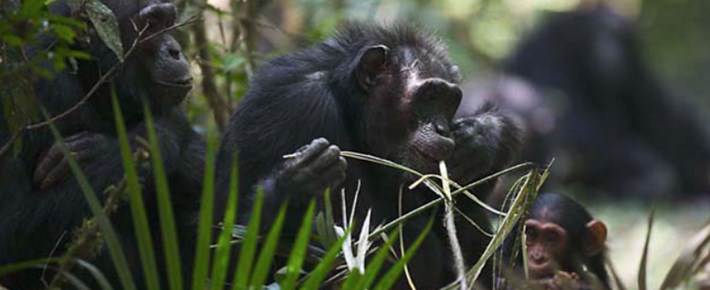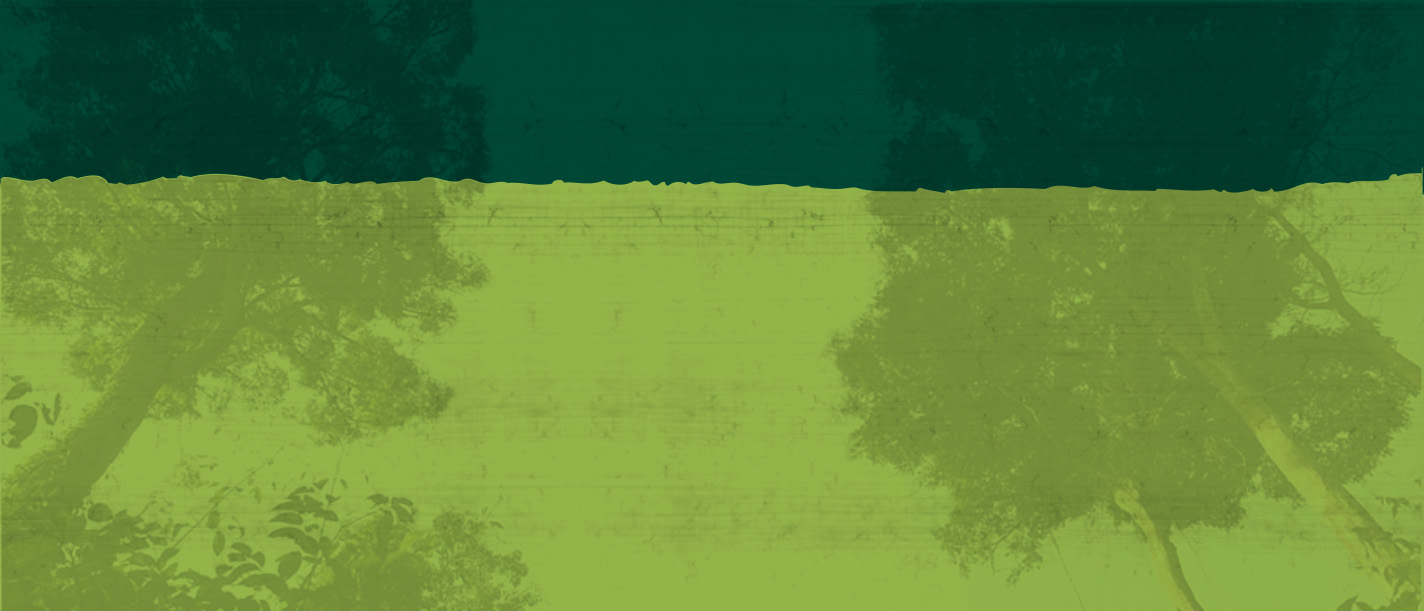Chimpanzee Communities

Budongo Forest is home to some 600-700 chimpanzees (Pan troglodytes schweinfurthii). A key aim of the Budongo Forest Conservation Field Station is to study and conserve the local chimpanzee populations. The chimpanzees of the Budongo Forest were first studied in the 1960s.
Chimpanzee groups
Below are details of the three groups of chimpanzees in the Forest that have been habituated to humans, some details of other communities are also summarised at the bottom of the page.
Sonso Community
Waibira Community
Kaniyo-Pabidi Community
Other communities
Sonso community
The Sonso chimpanzees have been studied continuously since 1990. This community lives near the site of a former sawmill. It is called the Sonso community after the River Sonso, which runs through its range. In mid 1998, this community numbered 53 individuals; in 2006 the number had gone up to 75. As of 2014 the estimate of its regular members numbers around 85 individuals, all identified and named and recognised by our Field Assistants. Our research project, because of its presence and because of the continuous day-by-day focus on this community of chimps, has contributed greatly to its protection.
Although initially shy of humans, sensitive daily observations by the project's Field Assistants gradually made them more comfortable (habituated) when watched by humans. Persistent hard work by our first Field Assistants, Geresomu Muhumuza and Zephyr T. Kiwede in 1991-1994 got the chimpanzees to a point where they were sufficiently used to humans to be followed at close quarters though the forest all day. As each chimp became known to the researchers and Field Assistants, it was given a name. Now, some years after the project started, all the chimps have been named and many new ones have been born. You can see the names and descriptions of all the chimpanzees in this well-studied community in the Documents section (see top menu).
Unfortunately, many of these chimpanzees have snare injuries, the result of being caught in snares set by local people to catch duikers and forest pigs. No one wants to catch a chimp, it happens by accident. It seems the chimp panics when it gets into a snare and pulls the snare tighter around its wrist or ankle. We have one chimp with a missing foot and two with missing hands. The other injured chimps have twisted hands, which they cannot use. Yet they manage to climb trees and find their food. And they are not discriminated against by other chimps. They continue to be caught in snares from time to time.
Waibira community
In 2011 we decided to habituate a new research community of chimpanzees. By doing so we could spread the increasing research impact on the Sonso community, increase the area within the Budongo forest in which BCFS staff take an active daily conservation role, and also ask new research questions. Chimpanzees live in a highly complex social world, they must defend their territory from neighboring groups, which can include patrolling the boundaries and may even escalate into aggressive fighting. At the same time, female chimpanzees when they reach maturity move away from their natal group and into a new community, this requires them to walk a delicate social tightrope - males in the new group are likely very interested in having a new female around, whereas the existing females may not have an interest in increasing competition for themselves or their offspring. To date, while a few forests have multiple research groups of chimpanzees almost none have successfully habituated neighbors. This inevitably means that when observing intergroup interactions we have a very significant effect on the outcome - with the unhabituated individuals simply running away. By habituating neighbouring groups we will be able for the first time to study this fascinating area of chimpanzee behavior.
We surveyed the groups surrounding Sonso looking for a large community, living in a forest area in which we would be able to observe and move with the chimpanzees, and a group who were at least one community removed from the forest edge - reducing the chance that we might increase human habituation of chimpanzees who may travel out into the surrounding villages. We settled on the Waibira community to the north-east of the Sonso range - only a few weeks into the work we discovered the added bonus of two very well habituated Sonso-born females, who had transferred out of Sonso a couple of years previously. Between a systematic habituation protocol focusing on positive daily interaction, and the extra help of having two 'model' chimpanzees who were unafraid of research observers, habituation has progressed incredibly quickly.
With 76 individuals named to date, the Waibira community is estimated to contain 100-120 chimpanzees, with over 30 mature males. Their home range is approximately 10.4km2. Systematic long-term data collection started in April 2011 and has continued and been developed into a number of research projects. As in Sonso there is a significant level of permanent disfigurement due to snare-traps, but we are hoping that, as has happened in Sonso, the start of regular conservation efforts will start to decrease the numbers of new injuries.
The chimpanzees of the Sonso and Waibira communities are the subject of a continuous research project and may not be visited by tourists. Tourists are recommended to visit one of the following chimpanzee communities
Kaniyo-Pabidi community
These chimpanzees live in an area of forest in the north-east of Budongo. This community was habituated by the Jane Goodall Institute and is now managed by the Budongo Ecolodge. Interestingly, they travel into the surrounding savannah, and also cross into the main part of Budongo Forest. It is on the road from Masindi to Murchison Falls National Park. BCFS supports the Budongo Ecolodge as partners in monitoring chimpanzee health at Kaniyo Pabidi.
Other communities
We know of three other chimpanzee communities in the forest: The Busingiro community, The Nature Reserve community, and the Waisoke community.
The Busingiro community is situated far to the west of the Sonso chimpanzee. This community is not currently accessible through Budongo Conservation Field station.
Neither, the Nature Reserve or the Waisoke communities have been habituated or studied, but both share borders with the Sonso chimpanzees. The Nature Reserve community lives to the west, in an area of unlogged forest. This community may not be as strong as the Sonso community, judging from the fact that the Sonso chimps sometimes cross into their territory inside the Nature Reserve.
We know that unlogged forest is not as rich in food resources as logged forest, and so these chimpanzees may have to range widely to find their food. They may even travel as far west as the borders of the Busingiro community's range. The Waisoke community to the north-east is strong and occasionally enters the territory of the Sonso chimpanzees.
Related Content
- Explore
- Field Station Map
- Chimpanzee groups
- The Budongo Forest
- Accommodation
- BCFS Museum
- Veterinary Centre
- Herbarium
- Herbarium Plant Specimens
- Chimpanzee food list
Latest Articles
-
Revitalizing ornithology research at BCFS
November 30, 2024
-
Perspectives Collective Journal Launch
February 21, 2024
-
Snares are major threat to juvenile chimps in Budongo
November 25, 2022
-
Albino infant chimpanzee sighted in Sonso
September 07, 2021
-
The silver linning of COVID-19
September 15, 2020




